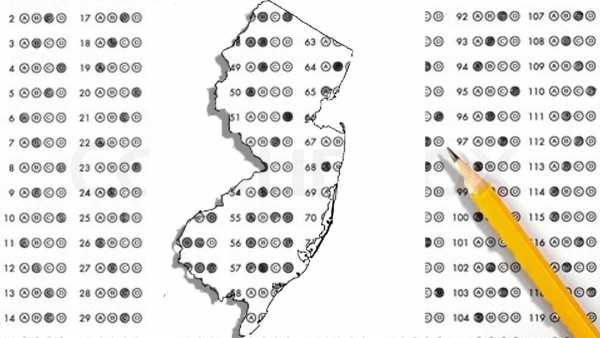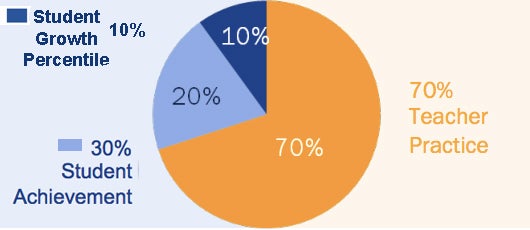New Jersey limits use of student progress scores to 10% of a teacher’s evaluation

The Christie administration bowed to political pressure last year when it reduced the weight that student test scores would carry in teacher and principal evaluations.
Whether out of politics or pragmatism, the administration announced yesterday that it would keep that scaled-back weight for another year.
 State Education Commissioner David Hespe told the state Board of Education that student progress (SGP) on state tests would continue this coming year to account for 10 percent of teachers’ and principals’ evaluations. It had initially been slated to increase to 20 percent and could ultimately go as high as 30 percent.
State Education Commissioner David Hespe told the state Board of Education that student progress (SGP) on state tests would continue this coming year to account for 10 percent of teachers’ and principals’ evaluations. It had initially been slated to increase to 20 percent and could ultimately go as high as 30 percent.
The decision to stay the course comes in response to a push made by Senate Democratic leaders this spring, led by Senate President Steve Sweeney (D-Gloucester) and Sen. Teresa Ruiz (D-Essex), who faced a growing movement in the Legislature to force the state to temporarily stop using test scores altogether.
State officials also indicated that they had been hearing similar sentiments from those who questioned raising the stakes at the same time that the first results from the controversial new PARCC exam were pending.
“We committed to learning as we go,” said Assistant Commissioner Peter Shulman at the board meeting. “PARCC is new, and we are going to wait as we get the results back … We don’t have that data yet, and we can’t make an informed decision as to what that data looks like.”
He added that keeping the status quo also benefited educators, who need time to get used to the new system.
“They said, ‘It’s working, we’re having better conversations about instruction, keep it the same,’” Shulman said. He noted that the best way to continue improving was by “holding constant with the weights this year.”
The use of scores only pertains to language arts and math teachers in grades 4 through 8, less than a fifth of the total number of teachers statewide. But it has been arguably the most contentious part of the new teacher evaluation system, especially among the unions, who contend it is not a valid measure of teacher effectiveness.
The scores are derived through what is called a median “student growth percentile” (SGP), which measures how a teacher’s students progressed against comparable students across the state.
Teachers are also evaluated on how students fare on measures other than tests, typically assessments or classroom projects.
The largest share of an evaluation comprises a supervisor’s formal and informal observations of a teacher in and out of the classroom, which make up a minimum of 50 percent of an evaluation and a maximum of 80 percent.
Ruiz, the chair of the Senate education committee and author of the tenure law that brought the teacher evaluation system into being, said yesterday that she was “encouraged at the response” from the administration.
“It is important that we don’t do anything that stops progress, but we’re also moving forward in a measured and responsible way,” she said.
A spokesman for the New Jersey Education Association, the teachers union, said it continues to oppose any use of the PARCC scores in teacher ratings.
“In the context that this could have gone to 20 percent, 10 percent is obviously a better outcome,” said Steve Baker. “But we ultimately think that this is not the right approach, and that’s an ongoing discussion we’re having with the state.
“And I might add that this move seems a tacit acknowledgment from the state that this issue is problematic and needs to be addressed,” Baker said.
________________________________________________________
NJ Spotlight, an independent online news service on issues critical to New Jersey, makes its in-depth reporting available to NewsWorks.
WHYY is your source for fact-based, in-depth journalism and information. As a nonprofit organization, we rely on financial support from readers like you. Please give today.




